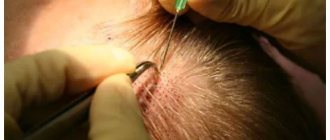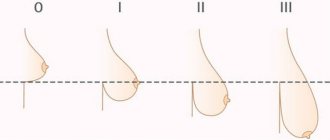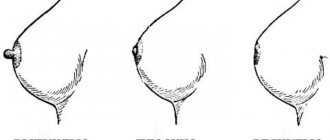Penile transplantation is a new approach to managing penile loss in the emerging field of composite tissue allotransplantation. Treatment of penile trauma with replantation provided a preliminary basis for the technical aspects of penile transplantation. In addition, penile transplantation raises many ethical, emotional and psychological considerations, with the need for patience as the field continues to advance.
Recipients and donors
The first question that needs to be resolved is who needs the operation and who will be the potential donor. Patients with penile cancer may be ideal patients to undergo a penile transplant. Patients who undergo total or near-total penile amputation often do not resume sexual intercourse, which may be due to their feelings of shame at having a short penis. Although reconstructive surgery has worked well among penectomy patients, an aesthetically perfect penis will not be achieved.
Reconstructive surgery can preserve the ability to urinate and achieve partial sexual function. However, poor cosmetic appearance of the penis and/or small size can affect psychological life. To some extent, penis transplantation offers patients a penis with an ideal cosmetic appearance. Patients with penile defects caused by trauma may also require a penile transplant. Although penile reconstruction, penile replantation, and penile lengthening are feasible surgeries, the following limitations should be considered:
- There is no perfect substitute for a real penis in reconstructive surgery
- In most cases, excellent cosmetic results cannot be achieved
- Several operations are required
- Requires limited ischemia time and a well-preserved amputated penis
- Occurrence of nerve and/or vascular damage
In some countries, many young men are losing their penises due to serious complications from traditional circumcision. The source of allograft is a major concern in all transplant operations. Similarly, penile allograft is also a challenge due to the specificity of this organ. The main donors for penile transplantation are deceased donors. However, there are some ethical issues.
Before they die, not all people will take a stand on organ and tissue donation, and even fewer will consider donating their penises. In theory, people who have expressed a desire to be an organ or tissue donor might be more likely to become penile donors compared with those who have never expressed a desire to donate; however, this theory can only be tested by interviewing people using a hypothetical scenario; to date this study has not been done.
Few patients support organ and tissue donation, particularly with organ confidentiality involved. For their families, a missing member may represent an imperfect body as a person; therefore, penis donation may not be acceptable to them. Thus, family consent must be obtained in a sensitive and compassionate manner, and the family must be fully informed about the nature of the research. burrows of the penile allograft.
Another source of allograft is the transgender population. For male patients who have undergone genital transplant surgery, including penectomy, their penis is a valuable source for those in need of a penis transplant. However, there are currently no relevant laws or regulations regarding the reuse of retained organs/tissues in surgeries. Moreover, in genital replacement surgery between men and women, the skin of the penis is essential for vaginoplasty. Skin grafts are necessary for an amputated penis, otherwise there may be difficulties in transplanting it.
The donor's personal information should not be disclosed to the recipient. Conversely, the donor's family should not receive personal information about the recipient from the research team or tissue procurement organization. However, this situation is complicated by the fact that the research team will likely wish to publish the results of their research. Although in this case the donor's identity will be masked to some extent, it is likely that such information could be inferred by the donor family. In addition, the recipient could potentially appear in the media or speak at transplant conferences, thereby publicly conveying their identity.
Guarantees of confidentiality are equally important for both the transplant donor (and his family members) and the transplant recipient (and his family members).
Why undergo penile transplantation?
The argument for penile transplantation begins with recognition of the extensive physical and psychosocial suffering of men and boys with severe genitourinary trauma. Damage to the genital area can lead to impaired excretion, urinary incontinence, sexual dysfunction, hormonal imbalance and infertility. Those who suffer penile injuries also often suffer from feelings of emasculation, suicidality, and post-traumatic stress disorder. In countries such as the United States, there are three key groups of beneficiaries: wounded military personnel, cancer patients, accident victims and transgender people.
In the case of soldiers wounded in war, it can be argued that the government has a clear obligation to support penile transplant experiments and the successful interventions that result. This appears to fall under the government's obligation to provide compensation to those injured while serving their country.
First Person: First American Recipient
The patient, who became a penis and scrotum recipient in 2018 at Johns Hopkins University, wished to remain anonymous. It is only reported that his loss of an organ is related to military service.
Tom Manning, the first American patient to receive a penis transplant at Massachusetts General Hospital several years ago (his quote practically opened the article); does not hesitate to talk about himself and his history of failures. Or, as he now believes, on the contrary, stories of success. Because everything could have been much worse.
In 2012, Tom had no idea that he would become famous throughout the world. It was his usual working day. Suddenly he slipped while unloading boxes and knocked over a heavy cart of papers. Despite the blood, pain in the groin area and swelling of the genitals, he did not go to the doctor - neither that day nor for the next two months. Eight weeks later, Manning finally sought medical help - but in addition to the injury, he was also diagnosed with penile cancer, which led to a penectomy.
Curtis L. Cetrulo, a specialist in plastic and reconstructive surgery, and Dicken Ko, a urosurgeon working at Massachusetts General Hospital, had long been passionate about the idea of a penis transplant. This was prompted by cases of combat injuries to the genitals received by American soldiers in Iraq and Afghanistan. At the same time, Johns Hopkins University was also planning to perform a penile transplant. Primacy depended only on who could be the first to complete all the necessary approval processes for the operation and find a suitable donor and recipient pair.
By the time of the transplant, Tom Manning had been living with an amputated penis for more than four years, and although doctors could not guarantee the complete success of the operation, he still took a risk. Thirteen surgeons participated in the fifteen-hour transplant (Fig. 4). The result was successful - doctors described it in a 2022 publication [14]. Within six months after surgery, Tom regained penile sensitivity, partial erectile function, and urination [7]. The side effects of immunosuppressant drugs can be frustrating, but Tom Manning remains optimistic. He told Esquire magazine that if he had a date with a sequel, the first thing he would do would be to run to call Ko and Cetrulo, shouting, “He's come to life!” In addition, the patient was already wondering whether the woman with whom he shared a bed would be considered to be sleeping with two men at the same time: with himself and with the donor?
Figure 4. Medical team from Massachusetts General Hospital
This is the story of America's first penis transplant
Doctors are confident that such a phenomenon as the loss of the penis should not be kept silent. Only openness will allow society to understand the need for the operations being carried out and change the skepticism and rejection that exists in the public consciousness. Patients who have undergone a successful penis transplant are unanimous in their opinion: they need the penis for a normal life. “This is a terrible injury. […] When I woke up [after the operation], I finally felt normal again,” is how the recipient of the penis and scrotum put it in a press release. Johns Hopkins University even organized a symposium in 2014 about military victims who lost their genitals in service. The problem was discussed not only with the victims, but also with their relatives and medical workers. The topics of self-perception as a person, self-esteem and personal relationships were raised.
“This surgery has the potential to change lives,” Dr. Richard Redett said in an interview. “If you meet a soldier like our patient and learn his story, you will understand why we did the transplant.”
History of the development of penile transplantation
Penile transplantation was first demonstrated in animal models. In one study, penises from brown Norway rats were removed and placed in the omental sac of immunosuppressed Lewis rats immunosuppressed with FK506 (tacrolimus), with no pathological rejection.
Another study involved penile transplantation between beagles (a hunting breed of dog) with microvascular anastomoses of neurovascular structures. The dogs were maintained on FK506, mycophenolate mofetil (MMF), corticosteroids and antibiotics. The catheters were removed on day 7 with voids recorded. On day 14, the transplanted penises were resected for pathological examination. Among 20 grafts, venous and arterial anastomoses were successful in 95% and 87.5%, respectively. Significant edema was noted in each case, with cerebral necrosis observed in three cases. Urination was normal in all subjects, and cystourethrography on day 10 confirmed a general absence of stricture. Pathology confirmed patent vasculature, limited inflammatory cell infiltration, and absence of interstitial necrosis.
Penile replantation
The first scientific work on penile replantation was first published in 1929 by Dr. Erich. It showed a macroscopic technique in which neurovascular anastomoses were not performed. This macroscopic method has resulted in poor results with future skin loss. x approach included anastomosis of the urethral mucosa, corpuscular spongiosis and a waterproof tunic of both corpora cavernosa. Microscopic penile replantation first appeared in 1976 with improved results
First penis transplant surgery
A hospital in Guangzhou in China reported the first human penis transplant in 2006. The recipient was a 44-year-old man with a history of traumatic penile amputation eight months previously, the organ was from a 22-year-old deceased donor. The donor's parents consented, and the donor and recipient were previously crossed for HLA (Human Leukocyte Antigens), panel reactive antibodies, and blood group. Approval was obtained from the hospital ethics committee.
The urethral mucosa was reapproximated, then the spongy vessel, as well as the white tunic of both corpora cavernosa. The deep dorsal vein, dorsal artery, and spinal nerve were then repaired, followed by the superficial dorsal vein after closure of Buck's fascia. Induction included daclizumab, MMF, and methylprednisolone. The maintenance regimen consisted of MMF, prednisone, and cyclosporine.
Venous congestion and edema led to the loss of the distal penis. The urethral catheter was removed on the 10th day after surgery. On postoperative day 14, the patient and his wife requested graft removal due to psychological concerns related to aesthetic appearance. Pathology confirmed the absence of rejection.
This initial report raised ethical concerns. The hospital subsequently published 10 principles of penile transplantation after reviewing the case. These included identifying the target population and the need to establish protocols and a review board for each case, including a multidisciplinary team of surgeons, transplant specialists, pharmacists, and psychological support for the recipient and partner. The need for careful preoperative assessment and informed consent for donors and recipients was also recognized.
Penis transplant surgery in South Africa
The next penis transplant was performed on December 11, 2014 at Tygerberg Hospital in South Africa. The patient was a 21-year-old man who lost his penis due to complications following a ritual circumcision. This problem affects approximately 250 South African men each year and leads to psychological distress and even suicide attempts. The 9-hour operation was led by Dr. Andre van der Merwe. The penis transplant surgery was reportedly difficult due to extensive fibrosis and disruption of the local vasculature. The spinal nerve was successfully restored.
Postoperatively, additional procedures were required secondary to pudendal artery thrombosis, infected hematoma, and development of a urethral fistula. The recipient was reported to have psychological improvement, intact skin sensation, and erectile function. It was also stated that natural conception was achieved, although this resulted in a stillbirth.
Successful penile transplantation in South Africa was new and exciting. But unfortunately, on reflection, this is part of an old and familiar pattern. In developed countries, health problems are often viewed from a significant biomedical perspective, and high-tech biomedical interventions are developed to address them. These technologies tend to be exported (to varying degrees) to developing countries, where typically only a tiny socio-economic elite can benefit from them. Developing low-tech, preventive, and potentially more equitable approaches to health problems appears to be less interesting (also financially) than producing the “next new treatment” through research and development. With penile transplantation, the disadvantages of this long-established pattern become dramatic. Failed circumcisions are a social problem, not just a medical problem, and for reasons of efficiency and ethics they need to be treated as such.
Table 1. Summary of penile transplantation between 2000 and 2014
| Patient | Year. Location. Team. | Immunosuppressant | Functional recovery |
| 44 year old man. Penile defects (traumatic case) | 2006, Guangzhou, China. Main hospital of the military command. | Pre- and intraoperative stimulation:
Maintenance:
| The urethral catheter was removed on day 10. Sexual function was not reported. The transplanted penis was removed on the 14th day. |
| 21 year old man. Amputation of the penis (failed ritual circumcision) | 2014, Cape Town, South Africa. Tygerberg Hospital, Stellenbosch University. | Immunosuppression was used, which applies to other composite tissue grafts (hand and face transplants) | Full sexual and urinary function |
Penile implantation in Boston
In May 2016, surgeons at Massachusetts General Hospital in Boston reported success with a penile transplant for 64-year-old Thomas Manning, who had previously undergone a penectomy for penile cancer. The procedure took 15 hours and involved 13 surgeons. The rejection episode was treated without complications. Sexual function has not yet been determined, but normal urination was confirmed only when the catheter was removed 3 months after surgery.
Guidelines for Penile Transplantation
After the first penile transplant, Guangzhou Military Command General Hospital issued a joint statement outlining the psychological issues associated with penile transplantation and a list of 10 principles to help surgeons decide whether to perform the procedure. These guidelines recommend that the procedure be limited to severely injured individuals who do not wish to undergo traditional reconstructive surgery.
The guidelines also state that the results of each procedure should be peer reviewed and that all study subjects should be informed of any early results that are “less than optimal,” as this event may influence future clinical decisions and clinical outcomes.
- Penile transplantation should only be performed on patients with severe penile injury.
- Penile transplantation must be performed at appropriate institutions in accordance with protocols approved by institutional review boards.
- Institutions should have surgical and transplant expertise, and transplant teams should include multidisciplinary experts such as plastic surgeons, immunology/transplantation specialists, infectious disease and oncology specialists, drug therapy specialists, physical therapists, pharmacology specialists, patient advocates and members of the media.
- Appropriate selection criteria must be established and the risk/benefit ratio must be considered for each individual patient.
- Patients and their families should be provided with specific informed consent documents explaining the risks, benefits, alternatives, and innovative nature of the procedure.
- Penile transplant candidates must undergo a thorough psychiatric and psychological assessment, including an assessment of their psychosocial support system.
- Patients with known psychological and psychiatric diagnoses, poor coping skills, poor support systems, or a history of non-compliance are poor candidates for penile transplantation.
- Due to the novelty of the procedure, gradual steps and the collection of additional evidence based on research conducted in this area are necessary to ensure its proper application.
- Expert review of the penile transplant procedure is mandatory to ensure compliance with medical standards of care and objective evaluation of the results.
- The ethics of performing a new procedure with unknown outcomes must be carefully evaluated and weighed against the potential benefits for a selected group of patients with severe penile injury following evaluation of such penile transplant candidates by medical ethicists.
Based on hospital regulations, the 10 guidelines mentioned above must be implemented before allogeneic penile transplantation. We believe that they are necessary and fundamental guidelines, although the procedure, which is still in a trial phase, may also create unpredictable problems. Therefore, permission to perform such surgery should be strictly limited to avoid causing more severe physical and emotional harm to patients and prevent the occurrence of serious mental illness.
Patient care after penile transplantation
It can be argued that new medical technologies are always expensive at first, but over time they become a normal part of the local standard of care. For example, antiretroviral treatment was astronomically expensive when it was first introduced in the 1990s and unaffordable for the millions of HIV-infected people who needed it in low-income countries. Following advocacy, concessions from pharmaceutical companies, and increases in generic drug prices, prices for antiretroviral treatments have fallen, saving the lives of millions of patients around the world. Who's to say that the same evolution won't happen with penile transplantation?
However, this argument has a number of shortcomings. The first thing to note is that in the case of antiretroviral treatment, it took two decades to achieve only partial coverage of those who need it, especially in resource-poor settings. Second, unlike antiretroviral treatment, penile transplantation is more complex in terms of infrastructure and healthcare resource consumption. It would be better to draw an analogy with other operations or transplants.
Perioperative management of the patient after penile transplantation requires a multidisciplinary approach. Donors must be screened for EBV, CMV, hepatitis B and C, and HIV serology. In addition, careful examination of penile injuries is necessary in an immunocompromised patient. ABO and HLA compatibility should be assessed to prevent rejection. It is unclear whether immunosuppression should be lifelong.
Postoperative wound care includes paying attention to swelling and signs of impending skin loss. A biopsy may be required to determine the need for correction of immunosuppression. Chronic CTA rejection is also a problem. This process affects the skin and deep vessels, which can lead to cutaneous sclerosis and graft loss. In patients with potency recovery, monitoring erectile function may reveal chronic rejection secondary to bodily fibrosis.
Restoring erectile function will depend on many factors. These include the neurovascular status of the recipient, the condition of the donor organ, surgical technique, and subsequent healing. In addition to assessing sexual function, psychological support should be provided to both the patient and the partner.
Optimization of the hormonal environment and the use of medications such as phosphodiesterase-5 inhibitors may be required. In replantation patients, placement of a penile prosthesis is usually delayed until sensation returns. Infection precautions are of utmost importance when considering prosthetic placement in an immunocompromised patient.
Competition "bio/mol/text"-2018
This work was published in the “Free Topic” category of the “bio/mol/text” competition 2018.
The general sponsor of the competition is: the largest supplier of equipment, reagents and consumables for biological research and production.
The audience award was sponsored by the medical genetics center Genotek.
"Book" sponsor of the competition - "Alpina Non-Fiction"
It seems that loss of the penis is a very rare situation. However, even in the absence of official statistics, many assume that the percentage of such people is higher than might be expected. This is simply not a problem that is commonly discussed. "You just don't know about it because it's the last thing a person wants to tell the world," says surgeon Dicken Ko of Massachusetts General Hospital. This category includes trauma victims, military personnel, penile cancer survivors, and victims of botched circumcisions.
"Ladies, I may be the most dangerous man in America right now: a 65-year-old man with a boy's penis!" - jokes Tom Manning, the recipient of the first penis transplanted in the United States and the only one who openly talked about his life before and after the transplant - in an interview with Esquire magazine. The surgery itself took place two years ago at Massachusetts General Hospital.
In March 2022, doctors at Johns Hopkins University performed an even more complex operation - they transplanted the penis along with the scrotum (without testicles) and part of the abdominal wall (video 1). The 14-hour operation on March 26 involved 11 surgeons, including Richard Redett, a doctor of plastic and reconstructive surgery at the Johns Hopkins University School of Medicine.
Video 1: Johns Hopkins University team publishes detailed schematic description of penile and scrotal transplant surgery
Figure 1. Richard Redette, Doctor of Plastic and Reconstructive Surgery at Johns Hopkins University School of Medicine , is one of the doctors involved in the operation.
www.wjla.com
“The patient is doing great now,” Dr. Redette said in an interview (Figure 1). “We expect a full return of erogenous sensitivity and the ability to maintain an erection.” The scrotum was transplanted without the testicles for ethical reasons because the DNA present in sperm cannot be transplanted without the donor's consent, Dr. Redette explained.
How much does such an operation cost? “We value it at about $300,000,” estimates Dr. Richard Redette. — We believe that the patient should not pay for the operation himself: it should be covered by insurance. This is especially true for those patients who have no other options for genital reconstruction.” Dr. Redette is confident that the cost of transplantation will decrease over time. But to do this, the team of doctors needs to gain more experience in performing operations and find out how much they can reduce the time an organ recipient spends in the hospital so that it remains safe for him.
Ethical considerations
Penile transplants involve medical, cultural, emotional and even religious issues. Genital organ transplantation is not a life-saving procedure, but a procedure to improve the quality of life. Medical considerations include screening and immunosuppression described previously. Immunosuppression in patients with a history of penile cancer is a concern, and the optimal cancer-free interval may need to be determined. Immunosuppression increases the risk of bacterial and viral infections, as well as secondary malignancies. In light of this, given a quality of life procedure that may threaten patients' longevity, a detailed risk benefit analysis is necessary. In addition, the threshold for removal of a transplanted organ should be discussed preoperatively.
Emotional issues affect not only the recipient and his potential partner(s), but also the parties involved in considering organ donation. A study involving one hundred people showed that the general public is not aware that donation does not only apply to kidneys or livers, but also the face, hands and genitals can be donated.
A New Jersey study of 1,000 people noted greater willingness to donate organs after death. Public awareness and education regarding donation is critical.
A detailed psychosocial assessment of potential recipients and their partners appears to be extremely important. The outcome of the case in China highlights the need for proper counseling and informed consent. There is also a need for privacy, despite interest from the media. Patients are likely to need social support and should be assessed for their ability to cope with possible stigma and even publicity. It's understandable how it can be particularly difficult to obtain a penis, as opposed to a hard intra-abdominal organ.
Informed consent
Ethical issues related to penile transplantation cross many disciplines, including regulatory issues, immunology, and psychology. Most notably, the informed consent process has been (appropriately) placed under the microscope due to its ethical complexity. Providing patients with adequate and relevant information is critical to the informed consent process; however, in the case of penile transplantation, the amount of information available to potential study subjects is limited because the procedure has only been performed a few times in humans. In addition, information about penile transplantation is complex, covering many types of anatomical structures, numerous reconstructive techniques, and complex pharmacological treatments.
Non-coercion is critical to the ethical regime, and research teams should take all possible steps to avoid, minimize and disclose their conflicts of interest. Particularly in the case of experimental methods, it is easy to understand how impatient surgical teams and desperate patients can become inappropriate partners in relationships in which the patient first becomes the research subject and then the patient.
Thus, because penile transplantation is a very complex area of clinical research, the use of a research advocate during the consent process is warranted. An attorney (often a bioethicist) is not part of the research team but understands the ethical and scientific issues involved in the research. In addition, the advocate ensures that patients have the functional capacity to consent to participate in the study and educates them about the risks, potential benefits, and treatment alternatives, as well as the experimental nature of the study, in an attempt to eliminate any misconceptions the patient may have.
The attorney also ensures that potential subjects understand that there may be risks that are currently unknown to the research team. During this process, the attorney attempts to clarify the patient's motives and determine whether the patient is under any duress to participate in the operation.
Immunosuppression
Ethical issues associated with immunosuppression require researchers to explore the potential benefits of penile transplantation, while taking into account the burdens and risks associated with taking the drugs, since skin is one of the most antigenic tissues in the body.
Immunosuppression regimens for composite tissue allotransplantation protocols are similar to those used in kidney transplantation. Standard induction drugs are usually steroids, anti-thymocyte globulins, and anti-CD3 monoclonal antibodies. Maintenance therapy after transplantation usually includes prednisone, tacrolimus, and mycophenolate mofetil. Each of these drugs has its own unique side effect profile; however, a common concern with these drugs is their potential to predispose the patient to opportunistic infections, end organ damage, diabetes, and lymphoma.
Following a lifelong immunosuppressant regimen, antinegative drugs are an acceptable compromise in the case of life-supporting organs such as the heart, kidneys, or liver. The penis is not a life-sustaining organ, but it should not be considered a general organ.
Treatment with penile prosthetics: types of implants
Surgical treatment of impotence is performed using three types of implants, which differ in design.
- Uncontrollable semi-rigid.
Such implants cannot change in size and are made of silicone. Therefore, after their installation, the penis remains permanently erect. The problem can be solved by constantly wearing shapewear. This type of phallus implantation is the most inexpensive. However, it causes a lot of difficulties for patients, so it is used quite rarely. - Controlled plastic.
Silicone is used to produce such prostheses. There is a flexible rod inside the implant, which makes it possible to fix the position of the penis. - Controlled hydraulic.
The highest quality, most expensive and complex prostheses. They are based on a design that includes cylinders, pumps and tubes. Such a prosthesis can almost completely replicate a natural erection. Advanced implant models are designed for a long service life (from 20 years), are extremely practical and convenient for patients.
The choice of the type of penile prosthesis depends on the patient’s capabilities.
Religion and Penile Transplantation
Religion and culture play a particularly interesting role in penile transplantation for donors and recipients. The issue of sexual sin is unique to this form of transplantation, and some may view such sin as being transferred with the genitals. Christianity affirms the role of caring for the sick and dying, providing support for organ donation. However, in 2009, Pope Benedict XVI wrote an open letter that included a ban on the transplantation of gonads and organs related to personal and productive identity.
The Islamic position is that organs responsible for fertilization and satisfying sexual desire should not be passed from one person to another. Conservative and Reform Judaism encourages organ donation, and there is no clear consensus on brain death among Orthodox leaders. Organ donation has been a part of Hindu myths and scriptures without a clear discussion regarding genitals. Buddhism and Confucian ethics discuss the time of death and the role of the lingering spirit afterwards, making the concept of donation somewhat complex.
Lab-grown penises[edit]
In 2009, Anthony Atala and his colleagues at the Wake Forest Institute for Regenerative Medicine in North Carolina transplanted bioengineered penises into 12 rabbits. They all mated, and four gave birth. It was a test of a concept he had been working on since 1992, with the goal of creating human penises for transplantation. He has since created test versions of bioengineered human penises. Although there have been several successful transplants of other bioengineered organs, including the urethra, transplantation of a complete bioengineered penis into humans has not yet been attempted. [15]
How much does a penis transplant cost?
The current costs of penile transplantation are extremely high. According to Andre Van der Merwe, a urologist who led the team that performed the penile transplant in South Africa, the total cost for the first month was estimated at R243,000 ($17,500) and approximately R16,000 per month ($1,150). ) for immunosuppression for the first 3 months after surgery Immunosuppression, however, is lifelong and costs at least $14,000 per year.
The costs of penile transplantation in resource-depleted settings must be contextualized. According to the World Bank (2013), South Africa has a gross domestic product of approximately US$350 billion, of which 9.1% is spent on health care, less than half of US health care spending. South Africa's per capita income is US$12,240, and South Africans' capital expenditure on health care is US$981, according to WHO and NCEA (2014).
Penis transplant surgery
These numbers should then be disaggregated by racial/ethnic groups, especially groups in rural areas that are most likely to experience circumcision failure. Thus, the costs associated with penile transplants will likely far exceed the means of those who need them most. This population is also very unlikely to have health insurance or be financially supported by non-profit organizations.
The continued use of penile transplantation raises the possibility of considering more controversial patient populations, such as those with congenital micropenis or those seeking sex graft surgery. This raises additional ethical questions, as well as the technical postulation of the possibility of transplanting a male phallus into a female recipient. Additionally, patients who have suffered traumatic blast injuries, as seen in wounded military personnel, can present a significant challenge due to significant disruption of the neurovascular anatomy in the pelvis.
As we move forward in an era filled with hope, patience is a virtue of utmost importance. Failures will occur, but they should not deter research into what is likely to be an operation that provides dramatic improvements in quality of life among properly selected individuals. If penile transplantation proves safe and effective, it will undoubtedly be gradually integrated into the healthcare systems of developed countries. If the first nine failures had prevented Murray and Merrill from performing the first successful kidney transplant, the world would be a very different place.
Price for phalloplasty
Phalloplasty is an expensive operation; its price ranges from 80 to 350 thousand rubles and depends on the specific type of surgical intervention and the complexity of the work. The price of an operation to change gender from female to male can reach 500-800 thousand rubles.
Phalloplasty is a complex microsurgical operation that is performed to restore or change the shape/size of the penis. The doctor can choose a specific type of operation; in some cases, safe injections of hyaluronic acid can be used. Most often, phalloplasty is used for gender reassignment, after injury or forced amputation of the penis.










